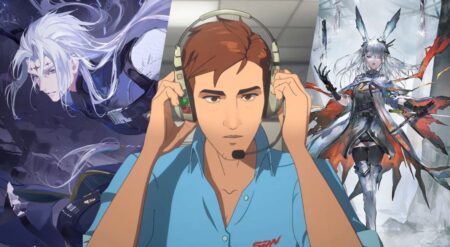Growing up as a Kurdish-American kid, confused about my place in Western society, Orientalism, and misinterpretations of our region in films, TV, and video games didn’t make things easier. While The Prince of Persia video game series seemed like it should have been an easy fit for me to find some representation, as Persians and Kurds are related, I somehow never played those games.
Perhaps my parents decided not to buy them for me, as they could easily tell, as I would tell growing up, that the older Prince of Persia games weren’t really meant for people of our SWANA communities. Perhaps it was more for those outside our communities with a systemic misinterpreting of our homelands. The casting of Jake Gyllenhaal in the Prince of Persia movie in 2010 hilariously encapsulated to me why this franchise wouldn’t be for us. However, nowadays, I would eat my words on the ability of The Prince of Persia to represent Persian and other West Asians in a constructive way. I am exceedingly happy to say that Ubisoft’s latest installment in the series, The Lost Crown, has resoundingly proven me wrong on multiple fronts.
Game director Mounir Radi and his team have taken a wholly new approach to the franchise. Typically known for its 3D gameplay, The Lost Crown gives players a 2D backdrop to play in as they fight as new series protagonist Sargon. Interestingly enough, Sargon is not the titular prince as other Prince of Persia games have had, but one of the “Immortals” fighters dedicated to serving the Persian Empire. There is visible diversity within the Immortals, with Sargon himself seemingly Black or Afro-Iranian, showing the diversity within the empire and the lands it conquered. While there is a prince involved, with details that I shall not spoil here, the game is focused on following this noble warrior of the empire as he navigates the complexities of the conflict he and his fellow warriors find themselves. And the player learns an incredible amount as we go along with Sargon.

Namely, The Prince of Persia: The Lost Crown incorporates a heavy amount of Zoroastrian mythology. The prophet Zarathustra founded the religion named Zoroastrianism after him. It encompasses belief in the one God Ahura Mazda, and the belief that fire is a gateway to understanding Ahura Mazda’s wisdom and magnanimity. As you play through the game, it offers various tidbits on Zoroastrianism to the player, giving players knowledge of the ancient religion and its teachings that I had growing up, such as when we celebrate Newroz (or Nowruz), the arrival of Spring and the New Year.
Nowruz (and its variations in spelling) is a celebration steeped in Zoroastrian tradition that endures strongly today in Kurdish, Persian, Afghan, and other Indo-Iranian cultures across West, Central, and South Asia. The symbol of the Faravahar from Zoroaster mythology remains a common symbol for Iranian peoples, which the game also incorporates throughout its design. The Prince of Persia: The Lost Crown also incorporates aspects of Arab mythology and folklore. It’s never in a way that conflates Arab and Persian culture, but to show how the empire’s spread and cultural diffusion did legitimately happen, such as in the implementation of Arabic words into Persian and vice versa.
To see a game so seamlessly teach players about West Asian culture, in the same vein as Ubisoft’s Assassin’s Creed: Mirage, is a milestone. Amazingly enough, while this is a fantasy set in ancient Persia, it never presents as Orientalist. Far too often, virtually any fantasy story set in the region would feel Orientalist in that it highly exoticizes, simplifies, and flattens the peoples and cultures of SWANA (and often with an ugly yellow filter). The Lost Crown, as a Persian set fantasy, never falls into that easy trap. Instead, we see the splendor of Ancient Persia.

You feel grounded as you engage in combat and interact with the resplendent 2D background. The world is majestic and real, just as most ancient SWANA civilizations were. There is a wide range of colors and settings, showing the mountains, palaces, and valleys of Persia. The background we play in is astounding both in its accuracy to Persian and West Asian architecture, with arches, columns, and heavily bearded statues that evoke the majesty of ancient Persian civilization. On a design level, the game is a true marvel of Eastern civilization.
The 2D gameplay is loads of fun, with fluid animations as you swing Sargon’s swords or shoot his arrows. The enemies range in difficulty and abilities, making for exciting gameplay as you follow Sargon’s path. Some bosses may be more difficult than others, but when you get the dodging times and timing of special techniques just right, you should be able to defeat them in a pinch. Once I have the full game, I look forward to playing more and delving deeper into the combat functions.
Overall, The Prince of Persia: The Lost Crown offers more hope for games set in the SWANA region and fellow studio release Assassin’s Creed: Mirage. After Orientalism and racism against SWANA people have pervaded the gaming space for decades, Ubisoft continues to show how it should be done with games that celebrate our cultures. I’m so happy to eat my own words about the Prince of Persia game series and embrace it as a positive representation of our communities. I keenly look forward to playing more when the full game comes out.
Prince of Persia: The Lost Crown releases January 11, 2024, on Nintendo Switch, PlayStation 5, PlayStation 4, Xbox Series X and Series S, Xbox One, and Microsoft Windows.







